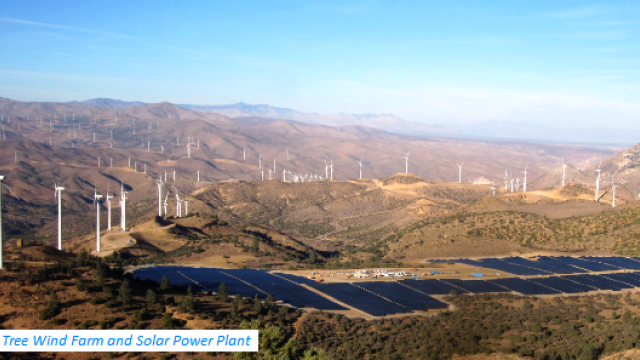The benefits of increasing our renewable power supply include: reducing greenhouse gas emissions, helping to eliminate the need for traditional fossil fuel power resources, improving air quality, providing a sustainable energy resource, and reducing dependence on foreign sources of fuel.
Progress
LADWP and City of Los Angeles leaders have been at the forefront of California utilities in adopting aggressive clean energy goals. LADWP was among the first electric utilities to achieve the first major state legislated target of 20% renewables by 2010. LADWP is on track to exceed the next state legislated milestone of 33 percent by 2020.
As of calendar year 2018, LADWP achieved 32% renewables, including:
| Wind | 11% |
| Solar | 13% |
| Geothermal | 7% |
| Eligible Hydroelectric Power | 2% |
Policy and Legislation
In the spring of 2019, Mayor Eric Garcetti released L.A.’s Green New Deal, an update of the Sustainable City pLAn that established aggressive new goals for our clean energy future. The goals include supplying 55% of our power retail sales from renewable energy resources by 2025, 80% by 2036, and 100% by 2045, as well as achieve a carbon neutral power system by 2050.
In September 2018, the Governor signed into law the California Clean Energy Act (SB 100), which accelerated the state RPS to 60 percent by 2030. The bill also requires that 100 percent of all retail sales of electricity come from eligible renewable energy and zero-carbon resources by 2045.
RPS Strategy
As LADWP expands its renewable resource portfolio, it is important that it do so in a cost-effective manner to minimize the impact on ratepayers. Some of the key considerations in selecting these resources include:
- Costs and operational impact of integrating renewables
- Technologies that deliver more energy during peak hours
- Preference for local projects
- Locating projects near existing transmission and other LADWP assets such as land and power infrastructure
- Diversification of resources
DER Strategy
As we increase renewable energy resources to meet local and state goals, we are also expanding our distributed energy resource (DER) portfolio, which includes small-scale energy generation, such as rooftop solar, as well as with energy storage, energy efficiency and demand response programs. We are working to grow the DER portfolio in a cost-effective manner to minimize the impact on customers and through collaboration with the private sector. This strategy includes engaging with property owners and maximizing capacity in preferred DER zones.
Toward this end, we are currently developing a request for proposals (RFP) slated for public advertisement in September 2020. To learn more, view the DER RFP Presentation from February 27, 2020.
Related Programs
-

Building Benchmarking
This webpage will guide you in obtaining and tracking your energy and water consumption, using the ENERGY STAR Portfolio Manager®. This will help you comply with the City of Los Angeles’ Existing Building Energy and Water Efficiency Ordinance (EBEWE), which became effective January 1, 2017. It also serves to comply with State Legislation that requires statewide building energy use benchmarking.
-
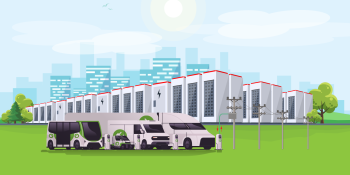
CES2G
CES2G, also known as the Commercial Energy Storage to Grid pilot program, is the nation’s first municipal utility vehicle-to-grid (V2G) and energy storage-to-grid program.
-
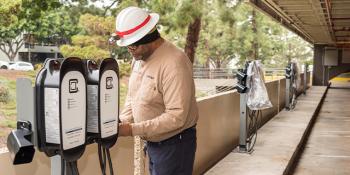
Commercial EV Charging Station Rebate Program
Rebates, for light, to heavy-duty vehicles, help support the growth of Los Angeles’ robust charging network.
-
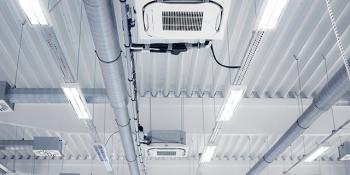
Commercial Lighting Incentive Program
Commercial Lighting Incentive Program (CLIP) provides incentives on the installation of newly purchased and installed energy-saving lighting and controls. With CLIP’s calculated savings approach, you can tailor your lighting efficiency upgrades to better meet your lighting needs, attain greater energy saving, and receive higher incentive payments!
-

Comprehensive Affordable Multifamily Retrofits Program
The Los Angeles Department of Water and Power’s Comprehensive Affordable Multifamily Retrofits (CAMR) program assists L.A.’s low income, multifamily property owners.
-

Custom Performance Program
When it comes to your business, every dollar counts. Let LADWP’s Custom Performance Program (CPP) incentives help you save even more! CPP pays you incentives for energy savings achieved through the implementation and installation of a variety of energy efficiency measures (EEMs) and equipment which meet or exceed minimum industry standards.
-
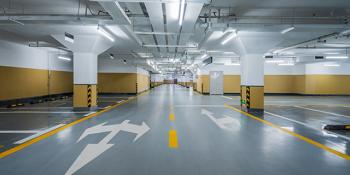
Demand Response Program
LADWP’s Demand Response (DR) is an incentive based, voluntary energy management program for businesses that helps reduce their utility bills during times of peak power demand, ensuring the continued reliability of power for Los Angeles.
-

Efficient Product Marketplace (EPM)
The EPM is a convenient online marketplace that allows you to shop a selection of popular energy-efficient brands available at numerous stores and online retailers with pricing and available rebate information.
